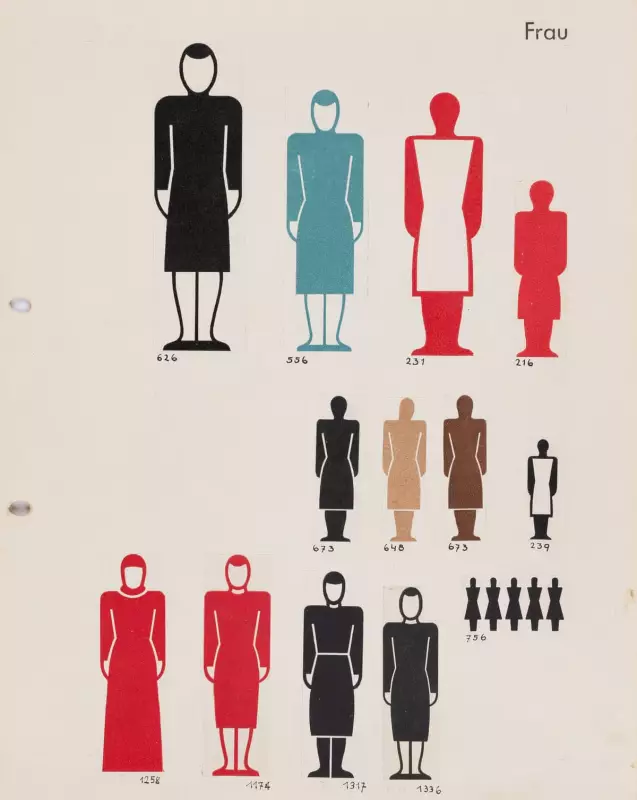
The Revolutionary Visual Language That Shaped Modern Culture
When Austrian philosopher Otto Neurath developed the Isotype visual language nearly a century ago, his mission was purely educational – to democratise knowledge and bridge class divides through clear, universal imagery. Little could he have imagined that his system of pictorial statistics would eventually influence some of the most iconic pop culture movements of the late 20th century, from synthpop to post-punk graphic design.
From Red Vienna to Post-Punk Britain
Neurath's journey to cultural relevance was anything but straightforward. Fleeing Nazi persecution in 1940, the Jewish intellectual and his third wife Marie Reidemeister escaped the Netherlands in a precarious boat crossing to Britain, where he was subsequently interned as an enemy alien on the Isle of Man. When Neurath died in Oxford in 1945 at age 63, his Isotype method – an acronym for International System of Typographic Picture Education – had gained limited traction in Britain beyond Paul Rotha's public information films.
His vision, crystallised in the slogan "Words divide, pictures unite", emerged from the socialist spirit of interwar "Red Vienna". It aimed to overcome educational inequality through instantly understandable imagery that showed "the most important thing about the object at first glance". This philosophy unexpectedly aligned with the demands of mass-produced pop culture, where immediate appeal is paramount.
The Unexpected Bridge to Electronic Music
The connection between Neurath's socialist infographics and pop music became strikingly apparent decades later. UK synthpop duo Orchestral Manoeuvres in the Dark (OMD) released a track called 'Isotype' in 2017, explicitly celebrating what singer Andy McCluskey describes as Neurath's "fucking genius". Speaking from his Wirral home, McCluskey revealed how both he and legendary graphic designer Peter Saville discovered Neurath's work in the early 1980s.
They recognised in Isotype's de-ornamentalised style – primarily designed by artist Gerd Arntz – a perfect precursor to the graphic asceticism of the post-punk era. "We liked the idea of reducing things to the minimum and still getting the point across," McCluskey explained. Their frame of reference included Kraftwerk's 1974 album 'Autobahn', whose cover featured the simple Isotype-style autobahn sign that became iconic.
However, McCluskey expresses ambivalence about one particular Neurath phrase: "To remember simple pictures is better than to forget accurate figures." While originally appealing, he now sees it as a "scary predictor of the world we live in now, in terms of soundbites and our limited capacity to understand," drawing parallels to modern political communication strategies.
Enduring Legacy in Contemporary Culture
The ongoing relevance of Neurath's work is celebrated in 'Wissen für alle: Isotype' ('Knowledge for All'), a newly opened exhibition at Vienna's recently expanded Wien Museum on Karlsplatz. Running until 5th April 2026, the display features original posters designed for Neurath's mass-reproducible "museums of the future", brimming with socialist utopian energy.
What might have seemed like mere historical nostalgia years ago now feels like a rediscovered manual for resistance – a reminder of how leftwing politics once successfully tackled intellectual snobbery to make complex ideas accessible to all. The exhibition includes OMD's music video for 'Isotype', created by German artist Henning M Lederer as a moving mandala of Isotype imagery, demonstrating the continuing dialogue between Neurath's educational tools and contemporary artistic expression.
Beyond music, Neurath's influence permeates modern visual culture. Peter Saville's iconic Factory Records logo and corporate identity for bands like Joy Division and New Order owe a clear debt to Isotype's minimalist aesthetic. Meanwhile, Neurath's fascination with technology – including his championing of early electronic instruments and prediction of artificial "Isotype voices" for documentaries – foreshadowed the electronic revolution that would transform popular music.





